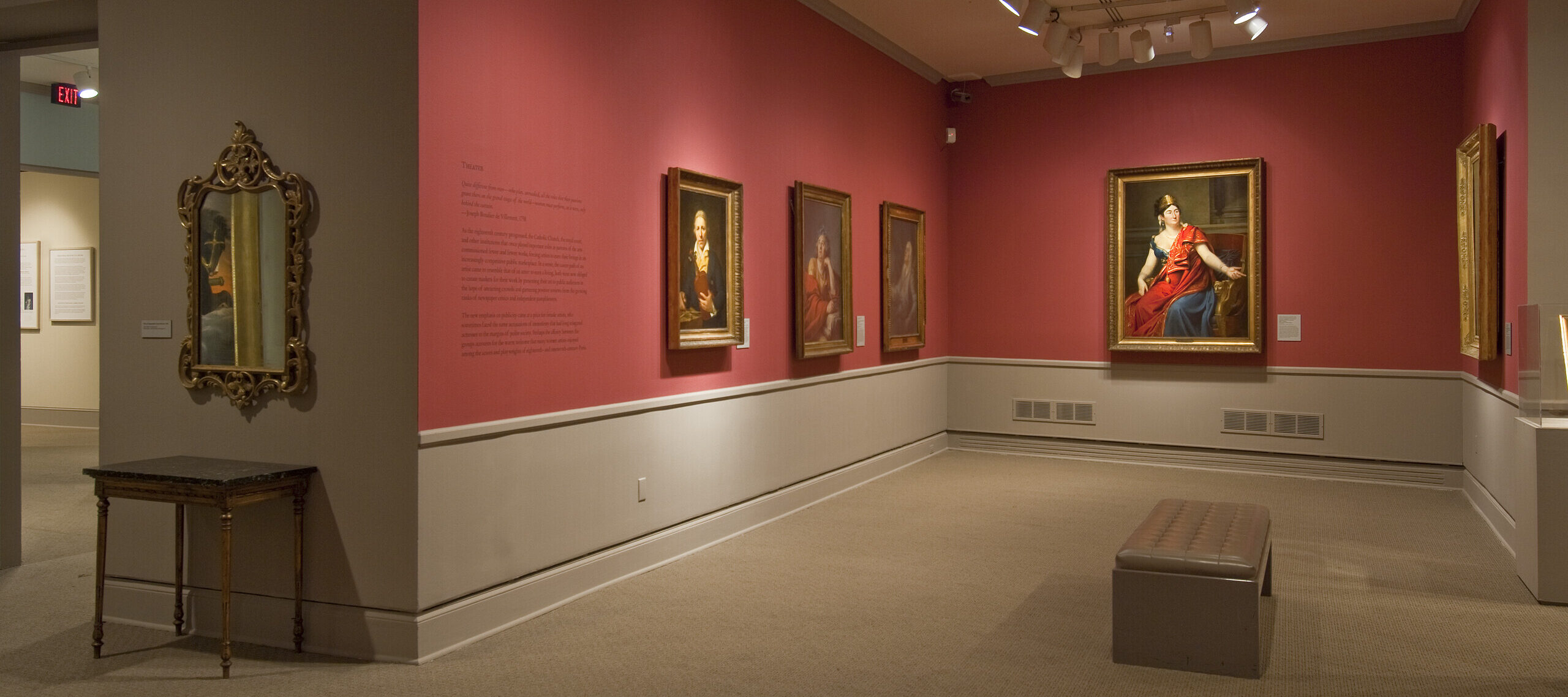In Royalists to Romantics: Women Artists from the Louvre, Versailles, and Other French National Collections, 77 works by 35 artists display the talents of French Revolution-era women artists. Their paintings are windows into their careers and the singular challenges of their time. The catalogue that NMWA has published to illustrate Royalists to Romantics includes essays as well as individual artist biographies that give insight into the lives of women artists working in France between 1750 and 1848. This excerpt explores the life of one the show’s featured artists, Rose Adélaïde Ducreux.

Rose Adélaïde Ducreux was the eldest of six children in the Parisian household of portraitist Joseph Ducreux (1735 – 1802) and his wife, Philippine Rose Cosse.¹ Having learned to paint in her father’s studio, Ducreux participated in her first exhibition in 1786. That January she sent a self-portrait to one of the biweekly exhibitions organized by the entrepreneur known as Pahin de la Blancherie in his commercial venue, the Salon de la Correspondance. Her father, whose difficult personality had evidently prevented him from winning admission to the Académie royale de peinture et de sculpture, also exhibited occasionally at this alternative space.
Father and daughter made their joint debut at the Louvre Salon in 1791, when Académie membership ceased being a prerequisite for participation. Rose Ducreux displayed two paintings: a portrait of a young woman and a life-size, standing self-portrait, painted in a Neoclassical style, depicting the artist playing a harp, now in the collection of the Metropolitan Museum of Art.² She went on to exhibit at the Louvre in 1793, 1795, 1798, and 1799, showing at least a half dozen paintings and studies, most of which remain untraced. The self-portrait in the current exhibition is dated to around 1799 based on its furnishings and fashions: the white, unstructured, néo-grec dress, the mustard-colored cashmere shawl, and the saber-shaped chair legs all point to this period.
In 1801 Ducreux became engaged to François- Jacques Lequoy de Montgiraud (1748 – 1804), a colonial prefect sent by Napoléon to Saint-Domingue (modern-day Haiti) to help restore order on the island, which was in the throes of revolution.³ After crossing the Atlantic, she contracted typhoid fever and died in 1802.
Notes
1. This biography is based on Joseph Baillio, “Une artiste méconnue, Rose Adélaïde Ducreux,” L’oeil 399 (October 1988), pp. 20 – 27; Neil Jeffares, Dictionary of Pastellists before 1800, online edition, updated May 18, 2010, http://www.pastellists.com/Articles/DucreuxR.pdf; and Margaret A. Oppenheimer, “Women Artists in Paris, 1791 – 1814” (PhD diss., New York University, 1996), pp. 171 – 72. On Joseph Ducreux, see Neil Jeffares, “Ducreux, Joseph,” Dictionary of Pastellists before 1800, online edition, updated March 23, 2011, http://www.pastellists.com/Articles/Ducreux.pdf; and Georgette Lyon, Joseph Ducreux, premier peintre de Marie-Antoinette (1735 – 1802): Sa vie, son oeuvre (Paris, 1958).
2. Jean-François Heim, Claire Béraud, and Philippe Heim, Les salons de peinture de la Révolution française, 1789 – 1799 (Paris, 1989), p. 194.
3. On Lequoy de Montgiraud in Saint-Domingue, see Jean-Marcel Champion, “30 Floréal Year x: The Restoration of Slavery by Bonaparte,” in The Abolitions of Slavery: From L. L. F. Sonthonax to Victor Schoelcher, 1793, 1794, 1848, ed. Marcel Dorigny (Paris and Oxford, 2003), p. 231.
